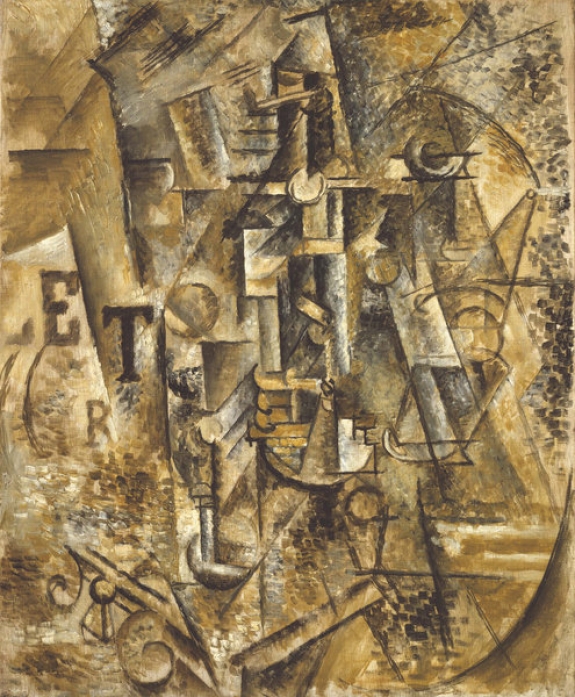Analytic cubism -- the name couldn't be worse. It sounds like an advanced placement course in geometry, not a descriptor for the dramatic stylistic shift that moved art from impressionism to abstraction, albeit with a loud grinding of the gears.
This early conceptual attempt at rendering the fourth dimension was a head-scratcher when it first appeared, and it is still cause for much explanatory heavy lifting. The cubist paintings made between 1910 and 1912 by Pablo Picasso and Georges Braque are considered the apogee of cubism, and that makes them the standard-bearers of this art moment that is underappreciated by most, and over-scrutinized by a few.
The work was reviled 100 years ago; time has proved it to be pivotal but hasn't helped its popularity. The Kimbell Art Museum has stepped into the breach with "Picasso and Braque: The Cubist Experiment, 1910-1912," which opens Sunday. The Kimbell owns two of the best works in the exhibit, and its conservation staff provided a gallery of supporting materials that show the various painting techniques the artists used to achieve their surface textures.
Between the 16 paintings, 20 etchings, a gallery of painting techniques employed by Braque and Picasso, a reading room and a special app for iPads called iCubist -- available to exhibition visitors free on 40 preloaded iPads -- there is a great deal of translation help with this exhibit. Although there may never be a "simply put" explanation for cubism, all this helps tremendously.
The tightly focused show, organized by the Kimbell and the Santa Barbara Museum of Art, is a revelation. Too often these paintings are relegated to a quick art history hit because their dark colors and extreme textural effects muddy and flatten when they are reproduced, and the works on paper are almost never exhibited. Seeing the prints for the first time, and many of the paintings, is truly edifying.
Picasso and Braque's intense two-year collaboration produced paintings that are often so similar that it is difficult to ascertain which artist painted which canvas. They avoided putting their signatures on the front, so they didn't assist in attribution. They used almost identical palettes of subdued earthy darks and golds, the better to separate themselves from the tutti-fruitti colors of the impressionists and color saturation of the fauves. The browns and blacks in the paintings are similar to conté crayons used in drawings, to further suggest these are exploratory works.
The artists looked at their subject matter from above and from eye level, combining the viewpoints to create an approximation of a greater whole, in theory anyway. They used hard lines to define space, but the lines also fractured the plane of the canvas into prismatic sections. The sections would then bleed into adjoining ones through a blending of colors called passage.
The artists added hatch marks, incised lines in the wet pigment, mixed sand and metal filings into the paint, used stenciled letters and pasted on pre-printed papers for some of the first collage effects. Braque is given credit as the first to try many of these; Picasso would then push the limits of what the effects could do. Picasso's contribution to the additives was using Ripolin, an industrial house paint that would add brightness and shine to black pigments; he liked it because it dried quickly.
They used still lifes as their favorite departure point, at first using typical genre items such as fruit or wineglasses on a table. Soon the dining table turned into the round Parisian bistro tabletop with playing cards, wine bottles, wineglasses and beer. In Braque's early Glass on a Table (1909-10), the round curve of the table and the drinking glass are easily recognizable.
One year later, Picasso's Still Life With Bottle of Rum has a similar table curve in the righthand corner, the approximation of a bottle with a suggestion of fingers wrapped around it, and the floating letters "L," "E," "T" and "R." This is the first time Picasso included letters, and a painting done at the same time by Braque used fragments of the newspaper Le Torero; Picasso could have been mimicking Braque or using a play on lettre, the French word for letter.



